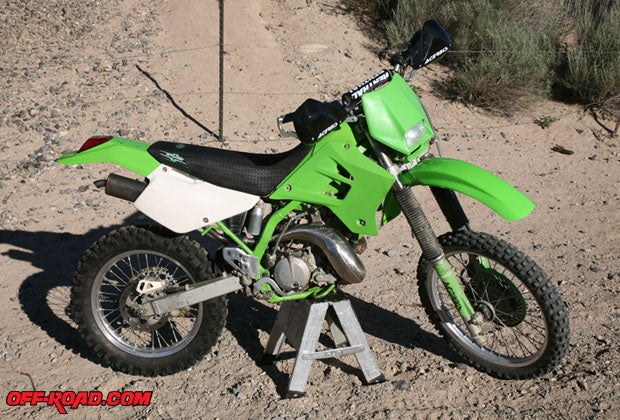
In need of an inexpensive dirt bike to hit the trails, we found a 2000 Kawasaki KDX 200 on Craig’s List for under $1000. The bike ran great but was in need of some updates after years of trail use, and thus we began our project to “refresh” the KDX to give it new life.
In the first step of our project, we updated the front and rear sprockets and replaced the chain with new pieces from Rental. We also swapped out our old bars for a new set of RC High Renthal bars that are a little more suited to our height.
Be sure to check out the other steps in our KDX 200 Project:
Part 2 – Acerbis Hand Guards, Plastic Replacement
Part 1 – Renthal Bars, Sprockets and Chain
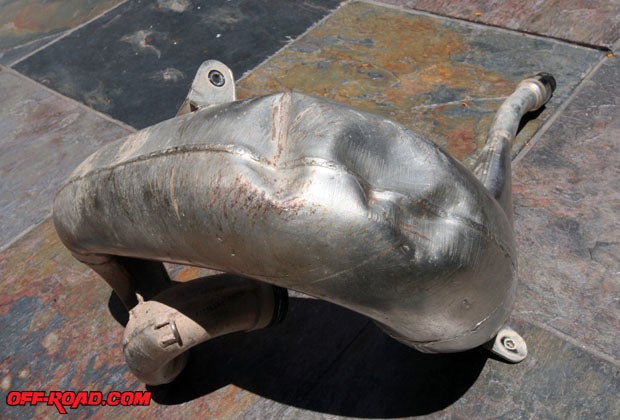
For the second part, we focused on updating some of the worn plastic and also added new, sturdier hand guards from Acerbis. The brawny Multiconcept X-Pro hand guards from Acerbis offer better hand protection on the trails, and replacing the worn front and rear fenders gave the bike a cleaner look. We also performed some needed maintenance by cleaning our filter with a UNI filter cleaning kit and swapped out the gearbox oil with some fresh Lucas Oil.
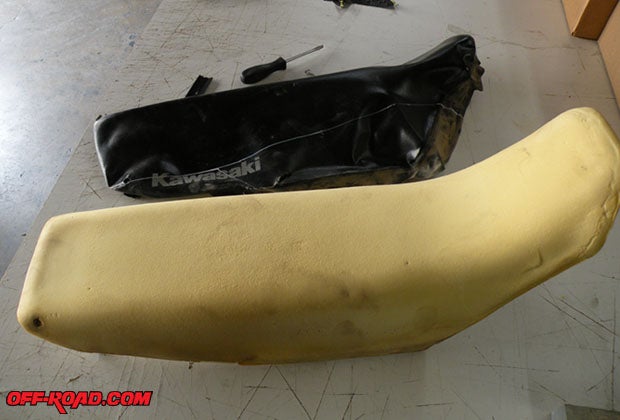
For our next step, we wanted to find a new seat cover to replace our torn stock Kawasaki seat. We also followed a lead for a shop in Oregon called Pacific Coast Pipe Repair that repairs dented exhaust pipes.
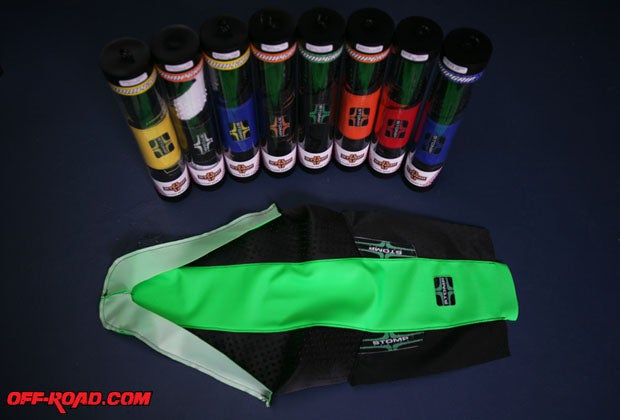
While trying to locate seat cover options we quickly realized there aren’t many. Companies we’d heard of over the years are long gone, but we eventually came across a company still making them right in our backyard – Stomp Design in Huntington Beach, California. Stomp has made seat covers for years, and they also specialize in making Stomp Pads for snowboards to provide traction for your boot when it’s not strapped in. Stomp offers dirt bike seat covers made in the USA for most current motocross and off-road trail bikes, and they also offer side panel and tank shroud traction kits for added grip. If you look closely, you might see its covers on the bikes of professional motocross and off-road racers.
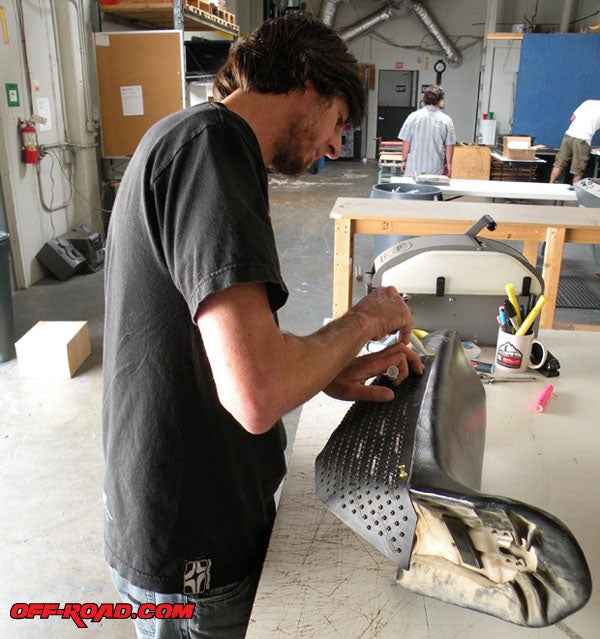
We spoke with Stomp Design President Dave Molinari about our project and he suggested we come down to the shop. He wanted to see if they had a cover already made that would fit our KDX. When we showed up they didn’t have a cover specifically for our bike. Due to the KDX seat’s steep rise near the gas tank all of the seat covers for other bikes would not fit. If Stomp does not offer a seat cover specifically for your bike, a custom-made cover can be created at an additional cost – which is a potential option for vintage bike racers. In some instances, other seat covers can also fit certain bikes.
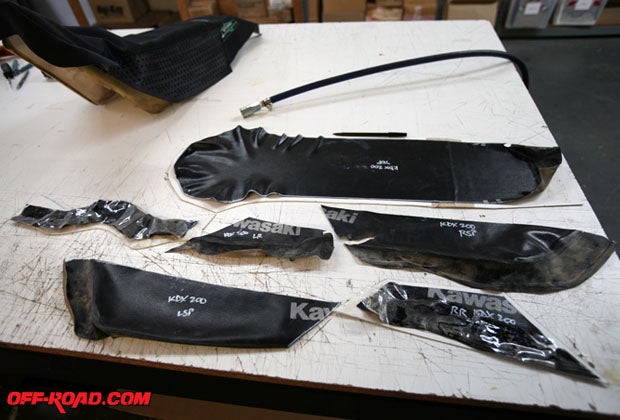
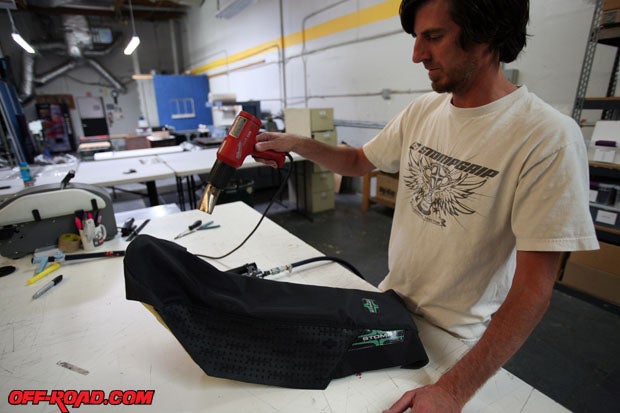
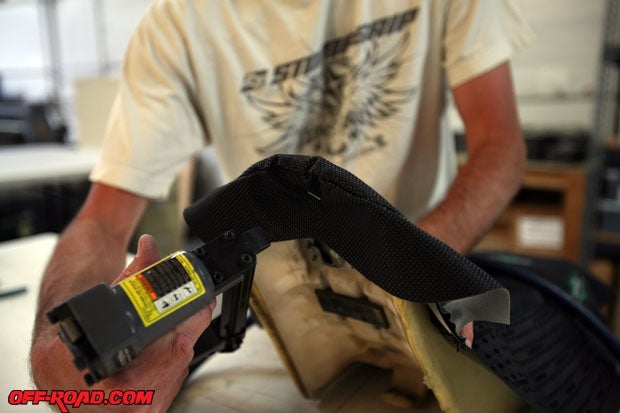
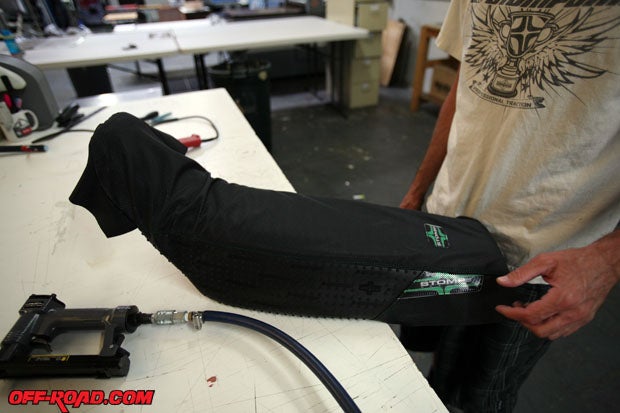
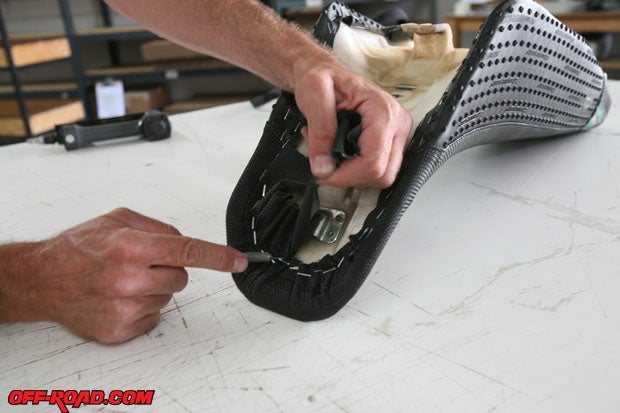
What sets Stomp’s seat covers apart from the rest is not just looks – it’s the added traction. “Stomp traction seat covers feature StompGrip traction panels and are made of a propriety molded-elastomer sewn into the most durable gripper seat covers available,” Molinari said.
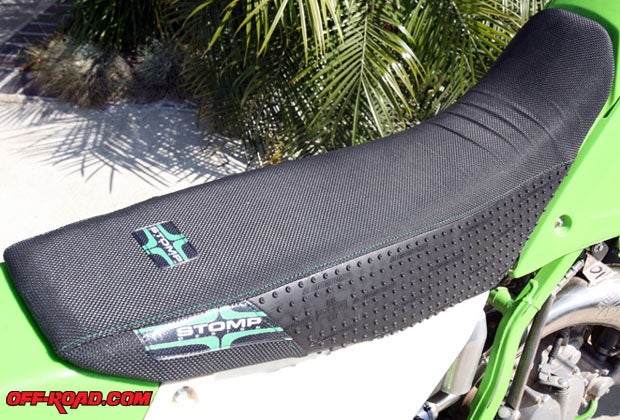
There’s no doubt the new Stomp seat cover looks great, but the added traction is definitely welcome on the trails, keeping us in place when winding through single-track sections, rocky slopes and tight turns. The seat covers can be sent directly to the customer for self-installation or the seat itself can be sent to Stomp for installation for roughly $40.
With the seat cover handled, we moved on to our exhaust pipe. The one thing we heard from a few KDX owners was that the FMF Gnarly Pipe is a great upgrade. So we were pumped when we showed up to purchase the bike to see it already had a Gnarly Pipe. The bad news is it has seen its share of trail time and had a few large dents in the main expansion chamber.
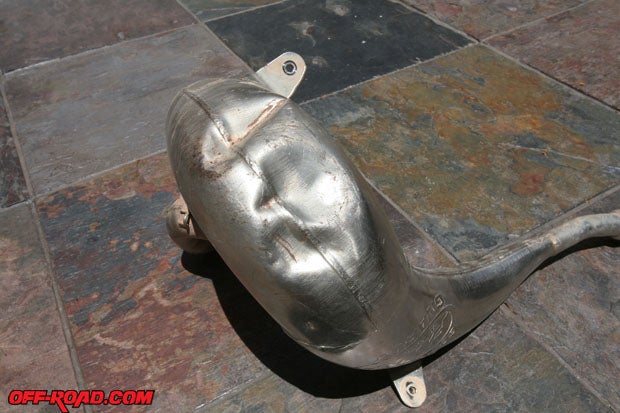
Off-Road.com contributor Jaime Hernandez actually sought a solution to the same problem for his dirt bike recently and found a place near his home called RPS Motorsports in Vista, California, that performed repairs on banged-up exhaust pipes. While researching where to take the pipe, he was actually referred by both FMF and Pro Circuit to try Pacific Crest Pipe Repair in Central Point, Oregon.
Hernandez decided to go with the RPS Motorsports since the shop was much closer to home, but he did speak with Pacific Crest Pipe Repair owner Bret Mitchell about their repair process. Mitchell explained that most customers simply unbolt the pipe and ship it up there, and that they are able to take out the dents using a blend of heat and compressed air. It might sound like something a weekend mechanic can do, but the team at Pacific Coast Pipe Repair has been at it for 13 years, and the torch-and-pressurized-air combination can be very dangerous (like “boom” dangerous). For pipes that are really banged up, they can be cut and re-welded if need be. If you’re unsure about if it can be repaired, just contact PCPR first.
“They can definitely send me a photo first,” Mitchell says. “I actually recommend that if they think it is too gnarly. If they send their pipe in and it is not repairable, we do not charge them. We also have a money back guarantee if they are not satisfied with the job we did. We do weld cracks or small holes if needed – all part of the repair cost.”
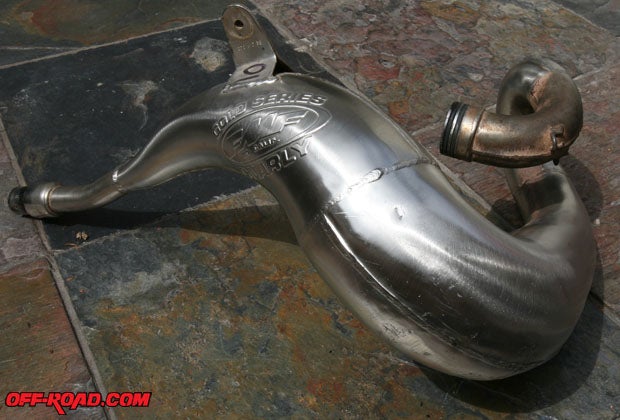
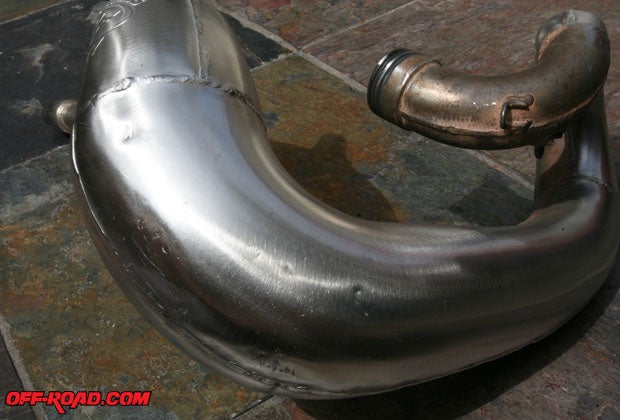
Our pipe was just banged up but was intact, so we unbolted it, popped it in a box and shipped it up to PCPR in Oregon. The repair itself only costs $60 (considerably less than a new pipe, mind you) and shipping each way was about $14 bucks.
All in all, it’s a pretty painless process. We shipped it out dinged up and got it back dent-free. We’ve heard all types of home remedies for popping out dents, including filling the pipe with water and putting it in the freezer. We haven’t heard any complete success stories, though, and the method Pacific Crest Pipe Repair uses definitely works – we can vouch for it. It’s a great resource for dirt bikers, especially if you are looking to repair a pipe that is no longer made or is a one-of-kind piece.
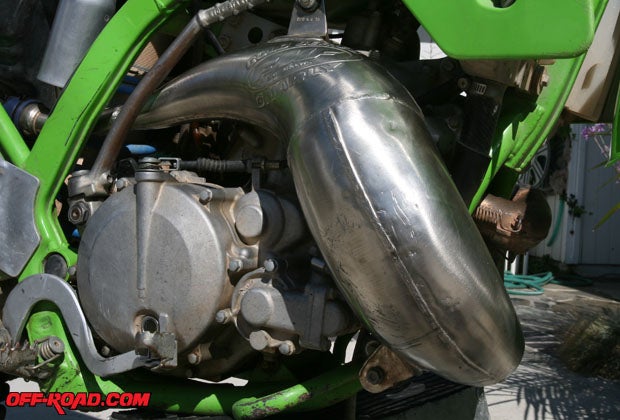
At this point our KDX 200 is really coming along. We’ve made some important but relatively inexpensive upgrades that have really changed the look and feel of our trail bike. The bike was trail-ready when we got it, but now it’s even more suited to our size and riding style – and all within a budget.
Be sure to check out the other steps in our KDX 200 Project:


 Your Privacy Choices
Your Privacy Choices